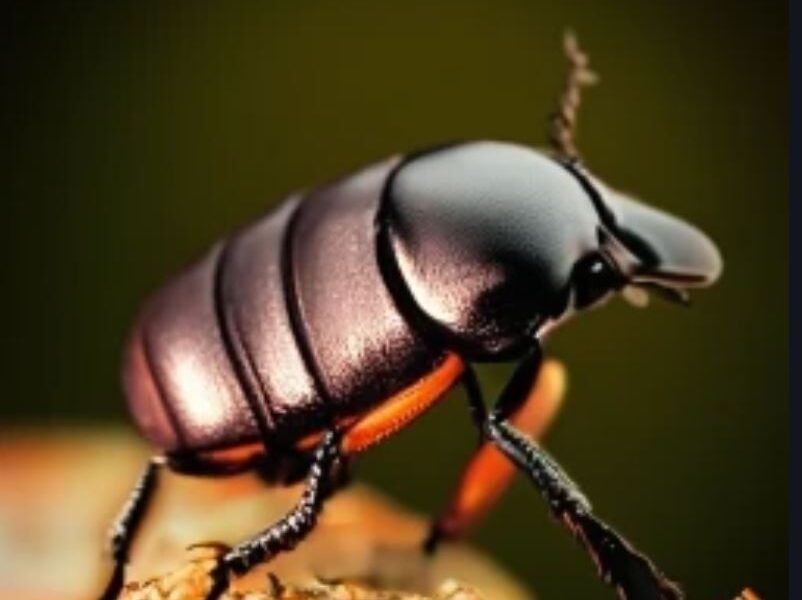Title: Exploring the Fascinating World of Beetles: A Comprehensive Guide to Beetle Types and Species
Introduction: Beetles are one of the most diverse and abundant groups of insects, with over 350,000 species identified worldwide. From the iconic ladybird to the formidable stag beetle, beetles exhibit a remarkable variety of shapes, sizes, and lifestyles. In this comprehensive guide, we’ll delve into the main types of beetles and provide information on some of the species you’re likely to encounter in various habitats around the world, from forests and fields to gardens and urban environments.
Understanding Beetle Diversity: Beetles belong to the order Coleoptera, which is the largest order of insects, comprising approximately 25% of all known animal species. They are characterized by their hardened forewings, known as elytra, which cover and protect the delicate hindwings used for flight. Beetles inhabit virtually every terrestrial and freshwater habitat on Earth, playing crucial roles as pollinators, decomposers, predators, and prey in ecosystems.
- Ground Beetles (Carabidae): Ground beetles are a diverse family of beetles known for their predatory habits and nocturnal activity. They can be found in a wide range of habitats, including forests, grasslands, and gardens. Ground beetles are typically dark-colored and have prominent mandibles for capturing and subduing prey. Some species are beneficial predators that help control pest populations, while others are scavengers or herbivores.
- Ladybird Beetles (Coccinellidae): Ladybird beetles, also known as ladybugs or ladybirds, are perhaps the most beloved and recognizable beetles. They are often brightly colored with black spots or patterns and are valued for their role as natural predators of aphids and other garden pests. Ladybirds are found in a variety of habitats, including gardens, meadows, and agricultural fields. They undergo complete metamorphosis, with larvae resembling small, spiky caterpillars.
- Longhorn Beetles (Cerambycidae): Longhorn beetles are named for their elongated antennae, which can be as long as or longer than their bodies. These beetles are typically associated with woody plants and can be found in forests, woodlands, and urban areas with trees. Some longhorn beetle species are considered pests of timber and can cause damage to trees by boring into the wood as larvae. However, many longhorn beetles are harmless and play important roles in nutrient cycling and ecosystem health.
- Stag Beetles (Lucanidae): Stag beetles are known for their imposing size and distinctive mandibles, which resemble the antlers of a stag. These charismatic beetles are often associated with old-growth forests and are particularly fond of decaying wood, where they lay their eggs. Stag beetles are relatively rare and are considered indicators of healthy, biodiverse habitats. Despite their formidable appearance, male stag beetles are harmless and primarily use their mandibles for display and combat.
- Dung Beetles (Scarabaeidae): Dung beetles are specialized scavengers that feed on feces and other organic matter. They play a crucial role in nutrient recycling and soil health by burying and decomposing dung, which helps to fertilize the soil and reduce fly populations. Dung beetles are found in a wide range of habitats, from grasslands and savannas to agricultural fields and urban parks. Some species are capable of rolling dung into balls, which they use as food sources or brood chambers.
- Water Beetles (Dytiscidae): Water beetles are adapted for life in freshwater habitats such as ponds, lakes, rivers, and streams. They have streamlined bodies, flattened legs for swimming, and often possess specialized respiratory structures for obtaining oxygen underwater. Water beetles exhibit a wide range of behaviors and feeding strategies, with some species preying on other aquatic organisms, while others scavenge or filter-feed on organic debris.
Conclusion: Beetles are among the most diverse and ecologically important insects on Earth, occupying a wide range of habitats and playing crucial roles in ecosystems. From predatory ground beetles to colorful ladybirds and formidable stag beetles, beetles exhibit an astonishing variety of forms and lifestyles. By understanding the main types of beetles and the species you’re likely to encounter, you can deepen your appreciation for these fascinating insects and their contributions to the natural world. Whether you’re exploring a forest, tending to a garden, or simply observing the world around you, take a moment to marvel at the incredible diversity of beetles and the intricate web of life they support.




